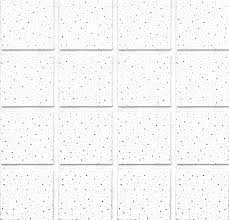10 月 . 31, 2024 21:45 Back to list
Innovative Designs for Perforated Metal Ceilings in Modern Architecture and Interior Spaces
Perforated Metal Grid Ceilings A Modern Architectural Solution
In contemporary architecture, design innovations continuously push the boundaries of aesthetics and functionality. One such innovative design feature gaining popularity is the perforated metal grid ceiling. This type of ceiling not only elevates interior aesthetics but also addresses various practical concerns in commercial and residential settings.
What is a Perforated Metal Grid Ceiling?
A perforated metal grid ceiling is comprised of panels made from metals such as aluminum or steel, which are punctuated with various patterns of holes or slots. These perforations can vary in size, shape, and spacing, allowing for a customizable aesthetic that can suit a wide array of architectural styles. The grid structure supports the panels, creating a modular system that is both lightweight and efficient.
Benefits of Perforated Metal Grid Ceilings
1. Acoustic Performance One of the most significant advantages of perforated metal ceilings is their ability to enhance acoustics. The holes in the metal act as sound-absorbing features, reducing noise pollution in busy environments. This quality makes them ideal for spaces such as offices, auditoriums, and restaurants, where a controlled audio environment is essential.
2. Aesthetic Versatility The design flexibility of perforated metal allows architects and designers to create visually striking ceilings that contribute to the overall ambiance of a space. Whether opting for intricate patterns for a dramatic effect or simple designs for a minimalistic look, these ceilings can seamlessly integrate with various design themes.
perforated metal grid ceiling

3. Durability and Low Maintenance Metal ceilings are inherently sturdy and resistant to damage from impacts, humidity, and pests. Unlike traditional ceiling materials, they require minimal maintenance over time. A simple cleaning routine is often sufficient to keep the surface looking pristine.
4. Sustainability Many perforated metal products are made from recycled materials and can also be recycled at the end of their lifecycle. This aligns with the increasing focus on sustainability within the architecture and construction industries, providing an environmentally friendly option for modern building projects.
5. Light Reflection and Distribution The reflective nature of metal enhances the distribution of light in a space. By strategically using perforated panels, designers can achieve better illumination that reduces the need for excessive artificial lighting, thereby lowering energy costs.
Applications in Modern Spaces
Perforated metal grid ceilings are versatile and can be utilized in various environments, including commercial, industrial, and residential spaces. In office buildings, they create sophisticated workspaces that promote productivity. In retail settings, they provide a modern backdrop that enhances merchandise displays. Additionally, in homes, performative metal ceilings can add an industrial touch to living areas or kitchens.
In conclusion, perforated metal grid ceilings represent a fusion of style, functionality, and sustainability in architectural design. As the industry continues to evolve, these ceilings offer a practical solution that caters to the demands of both modern aesthetics and environmental responsibility. Embracing this innovation not only enhances the visual appeal of a space but also contributes to creating a more efficient and enjoyable environment.
-
Revolutionizing Interior Design with Ceilings t grid Suspended SystemNewsOct.29,2024
-
Revolutionizing Ceiling Design with ceiling access panel with Gypsum Tile WaterproofNewsOct.29,2024
-
Revolutionizing Interior Design with PVC Gypsum Ceiling: A Comprehensive GuideNewsOct.29,2024
-
Elevating Interior Design with High quality Mineral Fiber Ceiling TilesNewsOct.29,2024
-
Revolutionizing Interior Design with PVC Gypsum Ceiling: A Comprehensive GuideNewsOct.29,2024
-
Elevating Interior Design with High-Quality Mineral Fiber Ceiling Tiles: A Comprehensive GuideNewsOct.29,2024







